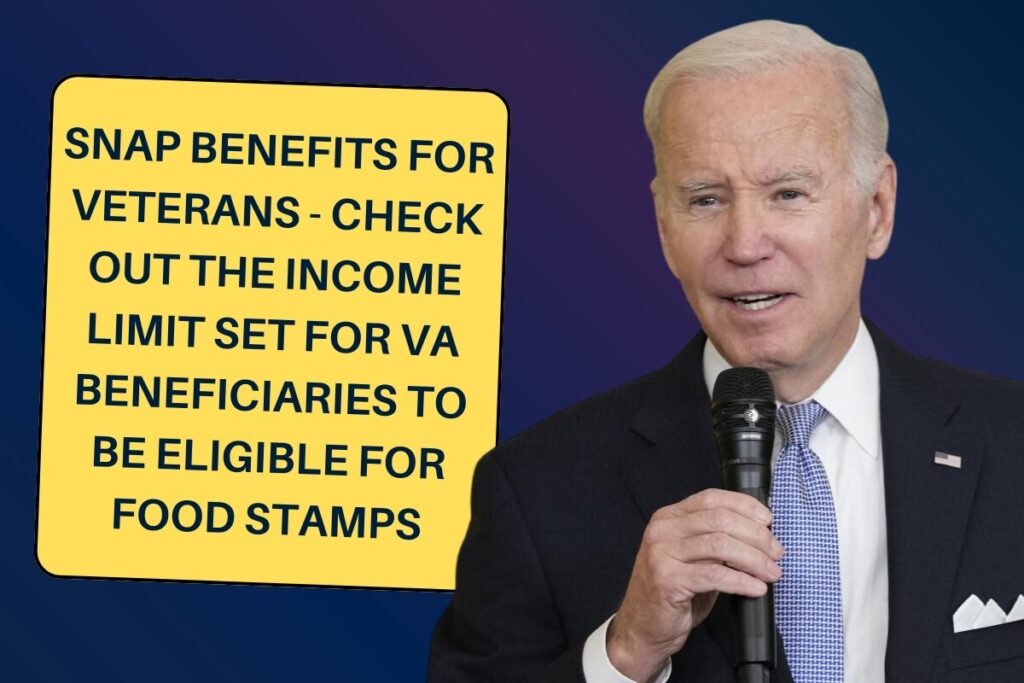What if you are a veteran and thinking SNAP Benefits for Veterans would impact your eligibility for food stamps. Programs like SNAP (previously known as food stamps) are intended to assist the 7.5% of veterans who face food insecurity. But since SNAP is a needs-based program, there are rigorous income limits that apply to different areas and household sizes.
Importantly, VA disability benefits are usually considered income when applying for SNAP. They come under “unearned income,” which in most jurisdictions includes Social Security, pensions, and other comparable sources. How much then can you make and still be eligible? That actually depends on the particular laws in your state.
In 2023, this would have been roughly $1,643 per month for a household of two. You cannot have more assets than $4,250, including cash and bank funds. You can deduct, for instance, medical costs, which, if you’re near the threshold, can make a big difference.
SNAP Benefits for Veterans
- Poorer mental and physical health, including a higher risk of suicide, are associated with food insecurity. As a result, it is a national priority to meet the needs of veterans who are food insecure. Regular screenings by the U.S. Department of Veterans Affairs identify veterans who may be at risk of food poverty and direct them to available resources.
- However, compared to their counterparts who are not veterans, food-insecure veterans are consistently less likely to be registered in the Supplemental Nutrition Assistance Program (SNAP).
- The body of knowledge regarding food-insecure veterans who enroll in and do not enroll in SNAP, as well as the reasons why these groups use different safety-net programs and why food-insecure veterans and nonveterans end up losing their SNAP benefits, is expanded by this research.
- More often than not, food insecurity is not a problem for veterans. But food insecure veterans are consistently less likely to be registered in SNAP than comparable nonveterans.
- The VA regularly assesses veterans for food insecurity and directs them to resources for nutrition support. But only veterans receiving VA health care are screened, thus these screens may not be thorough enough to identify all veterans in need of help.
- EBT cards, which function similarly to debit cards, are a tool used by SNAP to assist families in purchasing nutritious food. SNAP benefits can be redeemed at select farmer’s markets and nationwide retail locations.
How SNAP is affected by VA disability benefits
- If you are disabled or over 60, the restrictions do change slightly. If so, you may be eligible under special guidelines that consider your circumstances. For the purposes of SNAP, veterans who are homebound, permanently disabled, or receiving aid and attendance benefits are deemed “disabled,” affording them some additional flexibility during the application procedure.
- It’s recommended to check your state’s Department of Human Services website or get in touch with your local SNAP office if you’re not sure if you qualify. It’s important to double-check because rules are subject to change and fluctuate significantly from state to state.

Income limits for VA beneficiaries to apply for SNAP
You must know that seniors or disabled people have different Food Stamp income limits. Your household must meet certain eligibility conditions if you are a disabled veteran or over 60.
- Your monthly net income must not exceed 100% of the federal poverty threshold.
- There shouldn’t be more than $4,250 in assets.
After deducting permissible expenses from your gross income, your net income is determined.
Often referred to as “countable resources,” assets are things like money, bank account balances, and specific cars. A two-person household earning $1,643 per month, or 100% of the poverty line, may be eligible for SNAP benefits in 2023. Battle pay, hostile fire pay, and imminent danger pay do not qualify as income when applying for SNAP, as veterans of battle should be aware of.
You can satisfy the net income criterion by taking advantage of a number of eligible deductions, including those for excess medical expenditures. Furthermore, some assets usually do not apply to the $4,250 cap, such as your primary residence. “Categorical” eligibility refers to the possibility of receiving SNAP benefits without having to meet the net income test if every member of your household is receiving SSI (Supplemental Security Income) benefits.
VA Payment might affect veterans’ SNAP eligibility
- Veteran SNAP benefits are typically contingent upon meeting regular state income and asset restrictions.
- On average, veterans experiencing food insecurity who were eligible for VA benefits such as insurance and disability compensation participated in SNAP for a shorter period of time than those who were not.
- VA payments are often included in income eligibility calculations for SNAP at the state level, thus it’s probable that these benefits raised veterans’ incomes beyond the eligibility threshold.
| Our Homepage | Click Here |
